Guys and guns: Why men are behind the vast majority of America's gun violence
Gun purchases for protection have more than doubled, surpassing even hunting.
This report is a part of "Rethinking Gun Violence," an ABC News series examining the level of gun violence in the U.S. -- and what can be done about it.
Just before 11 p.m. on an April night, a 19-year-old man arrived at his former job site, an Indianapolis FedEx facility, and chatted with security about his status at the company.
The young man then exited his car with two legally purchased rifles and opened fire indiscriminately, at employees inside and outside the building, authorities said.
After killing eight employees -- ranging in age from 19 to 74 -- and injuring at least seven others, the gunman died by suicide, an attack "which he believed would demonstrate his masculinity and capability of fulfilling a final desire to experience killing people," the FBI in Indianapolis said this summer, months after the attack.
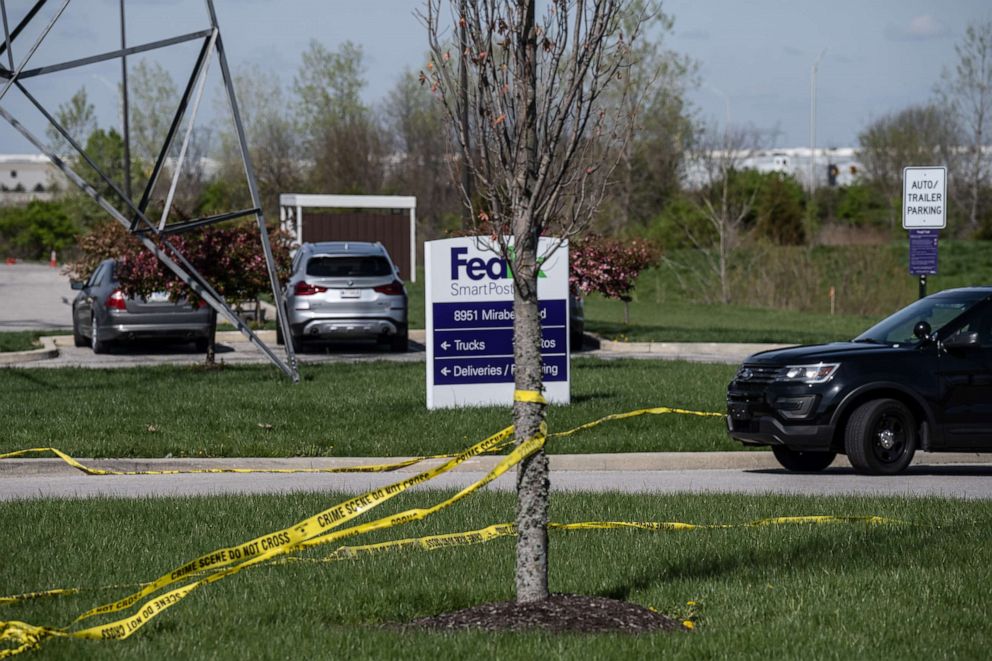
According to the nonprofit research center The Violence Project, men are responsible for 98% of mass shootings, and according to an analysis by Everytown for Gun Safety, a grassroots organization aiming to combat gun violence, men were behind 94% of 240 mass shootings (four or more killed regardless of location) from 2009 to 2020 in which the shooter's gender could be confirmed.
Watch ABC News Live on Mondays at 3 p.m. to hear more about gun violence from experts during roundtable discussions. And check back tomorrow, when we look at what’s behind rising gun ownership among people of color.
In 40 active-shooter incidents in the U.S. last year, 35 shooters were male, three were female and four were unspecified, according to FBI data.
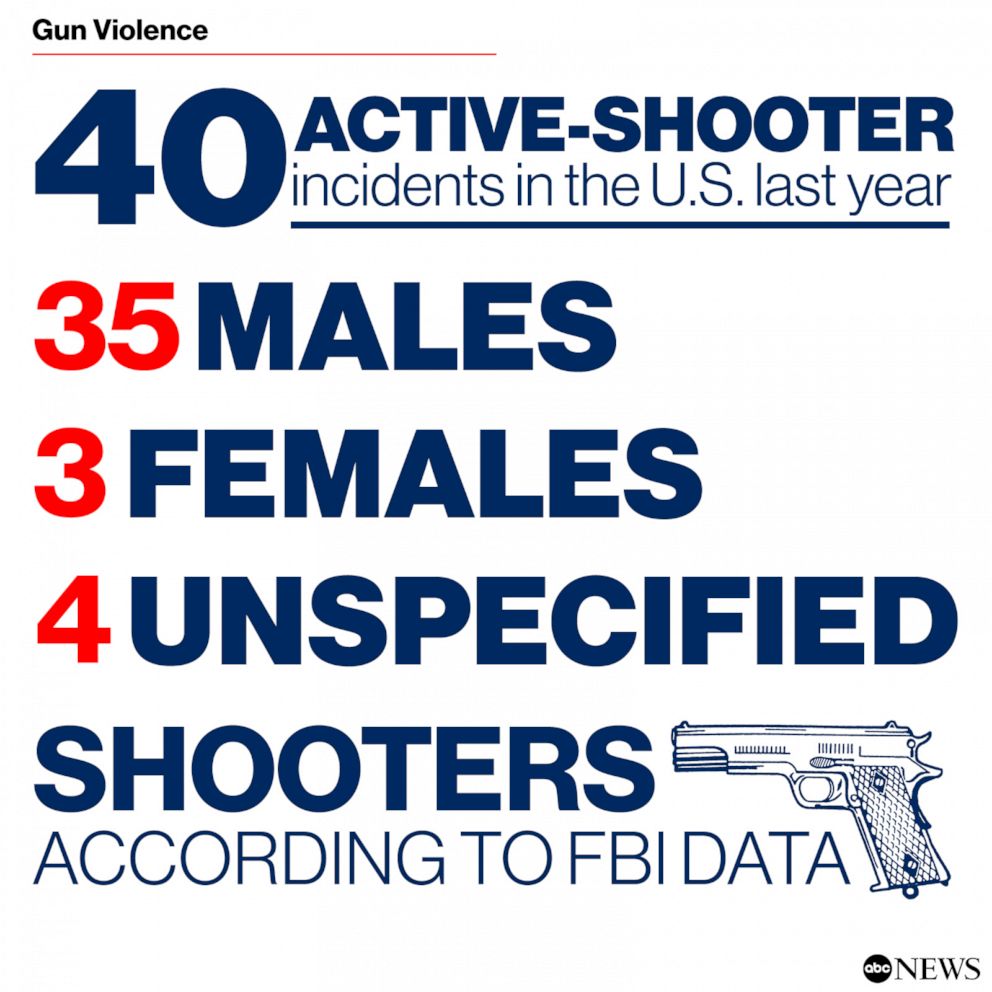
The gender gap goes beyond active shooter incidents. Of 16,245 murders in the U.S. in 2019, in those for which a suspect's gender was identified, 10,335 (63%) were committed by men, according to FBI data.
Gun violence victims also are predominantly male, accounting for 85% of fatalities and 87% of injuries through May, according to the Centers for Disease Control and Prevention.
But women are also deeply affected by gun violence, often as grieving family members or because they're left as sole caregivers of children in the wake of the violence.
Or as victims themselves.
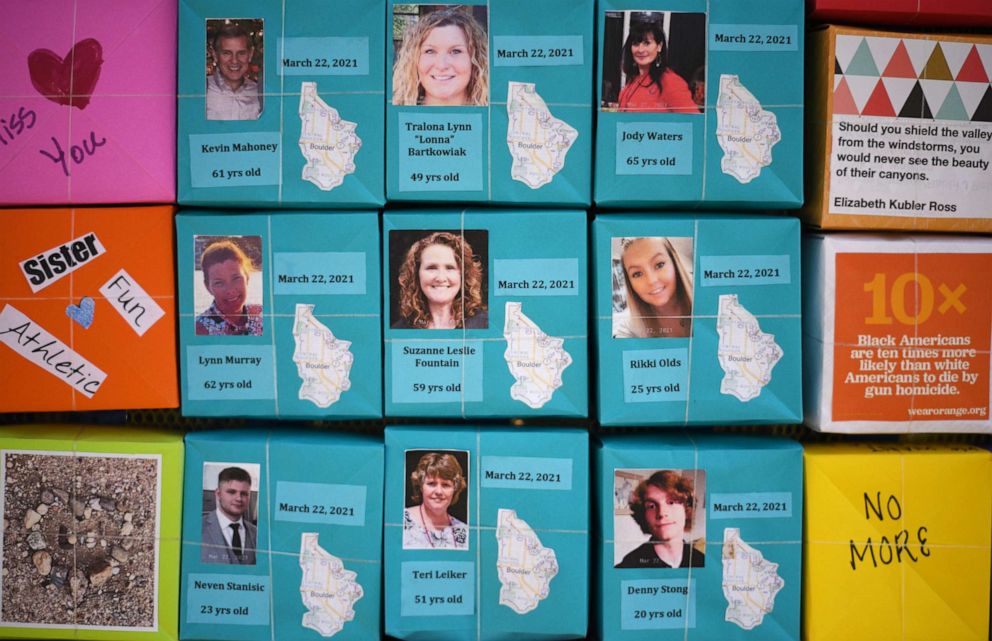
So why are American men so much more prone to gun violence? Experts cite a variety of reasons, from brain chemistry and evolution to how men and boys are socialized, said Jillian Peterson, co-founder of The Violence Project and a professor of criminology and criminal justice at Hamline University.
The ideology of masculinity is not all that different in Spain or Britain than it is here. But they don't have mass shootings like this. Why? I think that has to do with a specific version of American masculinity.
But other experts said it really just comes down to what they say is arguably America's most dangerous combination: toxic masculinity and gun availability.
'Only America'
Shannon Watts, founder of Moms Demand Action, said toxic masculinity, the cultural idea that manhood is defined by violence and aggression to maintain power or strength, is at the root of both domestic violence and mass shootings, adding that there's one reason gun violence is a "uniquely American issue" -- it's easy to get guns.
Men commit about 90% of murders worldwide (including but not limited to the use of firearms), according to a 2019 United Nations report. But America's gun homicide rate is 25 times higher than other high-income countries, according to Everytown for Gun Safety.
"Every country has racism, xenophobia, hatred. Only America gives those same people" access to guns, Watts said.
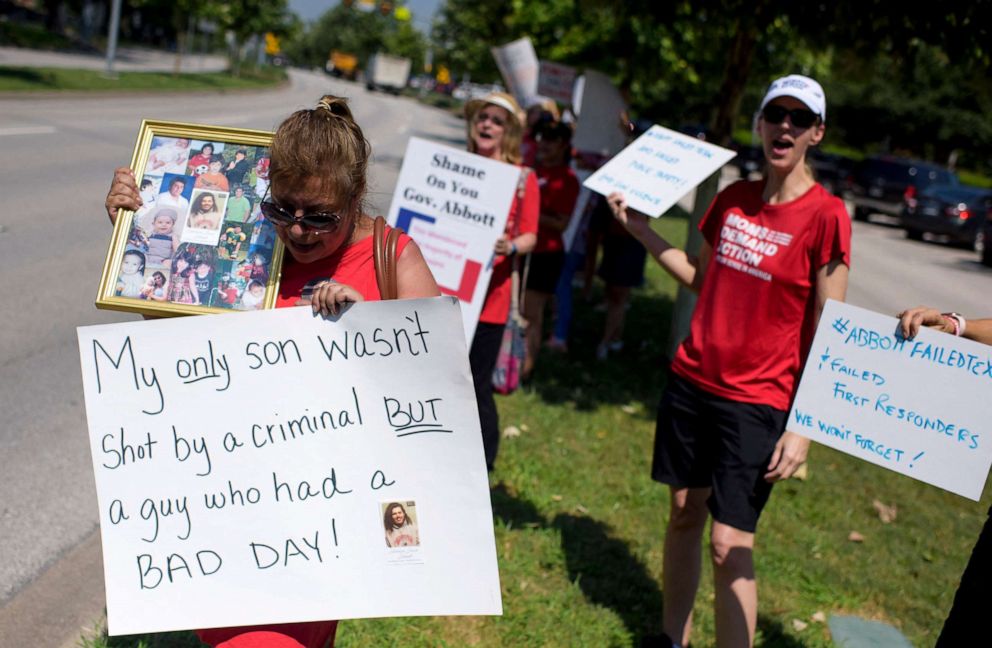
Gender studies expert Michael Kimmel agreed.
The traditional idea of masculinity is, "You don't get mad, you get even," Kimmel said. "The capacity for violence has been a hallmark of masculinity since the beginning of writing. Go back to 'The Iliad.' The Bible is filled with stories about vengeful violence."
"That is true for masculinity in other countries, in other cultures," Kimmel said. "So you have to also ask yourself: Why is it that gun violence at the scale that we see it is a phenomenon" in the U.S.?
"You have to ask the question," Kimmel continued, 'Why here and not elsewhere?' The ideology of masculinity is not all that different in Spain or Britain than it is here. But they don't have mass shootings like this. Why? I think that has to do with a specific version of American masculinity."
Kimmel said American men are responsible for such a staggering sum of shootings because of that ideological masculinity, American culture, which he said gives a "constant presentation of enemies," real or imagined, and -- the most significant contributor -- easy access to guns.
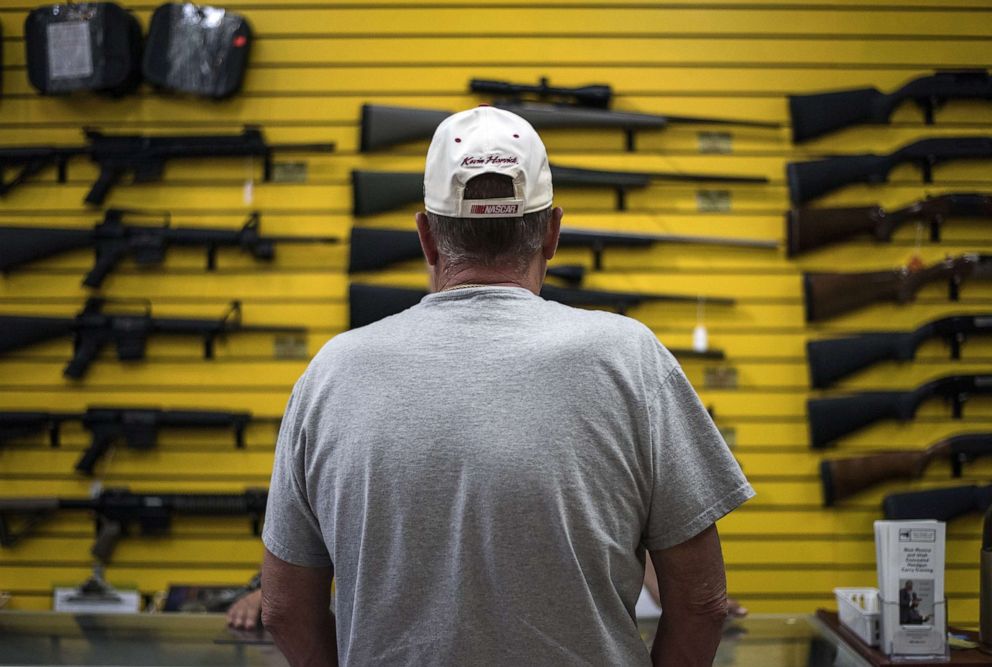
The power of 'protection'
Kimmel says protection also plays an important role.
"If you ask American men, what's the role of a man? He will tell you, 'To provide for and protect my family,'" Kimmel said. "In this uncertain economic world, being a provider is actually far more difficult than it was in my father's generation, than it was in his father's generation. I think some part of American men's fascination with guns and arming themselves has to do with, 'If I can't be a provider, at least I can be a protector.'"
About 45% of American men last year said they owned a gun, according to Gallup, and 19% of American women said they did.
In a 2017 Pew Research Center poll, 67% of gun owners said protection was a major reason for ownership, Iowa State professor Craig Rood noted in a Gender Policy Report through the University of Minnesota. Protection was followed by: hunting, sport shooting, as part of a collection and for one's job.
Only 26% mentioned protection in a 1999 Pew Research Center poll in which hunting ranked No. 1, Rood noted.
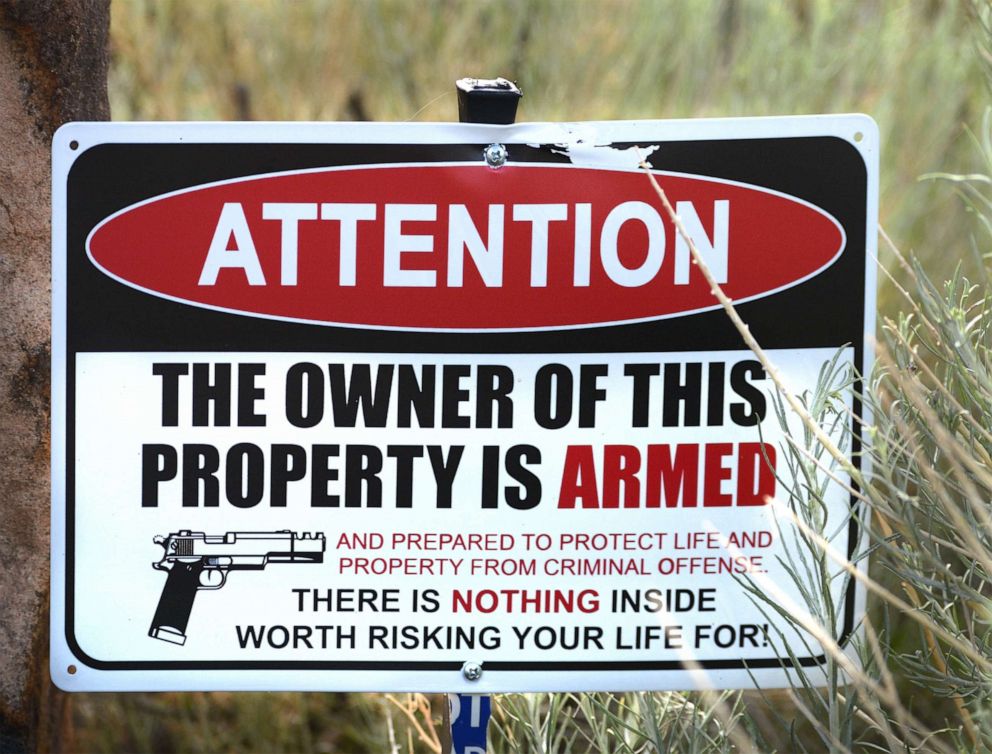
"I could imagine several explanations why Americans are more afraid today than they were in 1999," Rood told ABC News. "For instance, gun sales spiked after several high-profile mass shootings and again when the COVID-19 pandemic began. But not everyone has responded to that fear by turning to guns."
"When we are talking about 'protection,' we are talking about perception of danger, and perceptions of danger can be real, imagined or some place in between," Rood said. "Statistically, the United States has been relatively safe for most people, as crime and homicide rates started falling from the mid-1990s until quite recently. Yet the perception of danger has increased. So, there's an obvious mismatch."
Rood added, "I would bet most men acquire guns for commendable reasons: They want to protect themselves or their family, they enjoy hunting or they simply like guns. But the very presence of a gun in the home opens the possibility for accidents. Guns also heighten the risk for completed suicide and deadly intimate-partner violence."
What can be done?
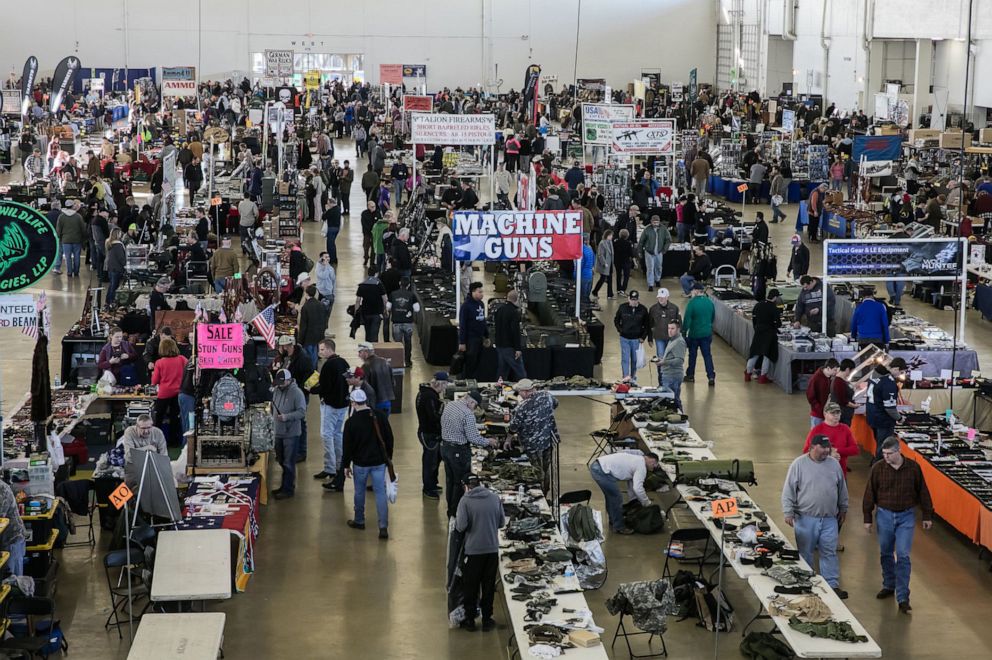
Peterson, of the Violence Project, said the key to fewer shootings is prevention, and offered four prongs.
1. Prevention should start early, by teaching boys how to understand emotions and trauma.
"Think about things like trauma screening and teaching social and emotional learning in schools ... teach young boys how to cope with emotions and have empathy," she said.
When it comes to male mass shooters, Peterson said many tend to have an attitude that "the world owes me more than what I have."
"They feel disappointed where they're at in life, or they feel frustrated that they lost their job or that they can't get a girlfriend or whatever it is ... so they pick a target of who to blame, whether they pick women or their school or a racial group," Peterson said.
In July, a 21-year-old Ohio man was charged for allegedly trying to carry out a mass shooting of women, prosecutors said. He allegedly compared his "extremely empowering action" to Elliot Rodger, a 22-year-old man who carried out a mass shooting at the University of California, Santa Barbara in 2014 after videotaping his rage over his rejection by women and vowed "retribution." The Ohio 21-year-old allegedly had a manifesto, according to prosecutors, in which he wrote he "would 'slaughter' women 'out of hatred, jealousy and revenge.'"
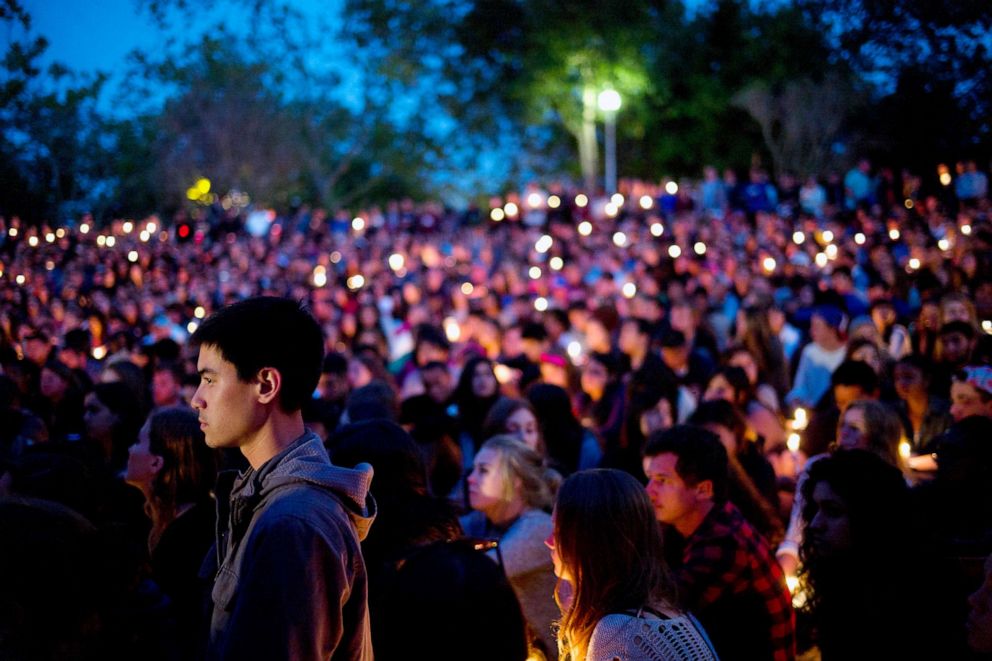
2. Peterson said the U.S. also needs better systems for crisis training and how to recognize and report someone's potential crisis.
According to The Violence Project, 82% of men who commit shootings are suffering from a noticeable crisis, with most showing at least one of the following symptoms and more than one-third exhibiting five or more: increased agitation, abusive behavior, isolation, losing touch with reality, depression, mood swings, paranoia and an inability to complete daily tasks.
Peterson said she considers the lack of a social safety net, which impacts trauma and crisis, to be a uniquely American problem.
3. Potential mass shooters often look online for others who validate their thoughts and feelings, or research past or potential shooters, Peterson said, so internet companies, especially social media platforms, must be pressured to better regulate hateful rhetoric and content.
Watts said parents also have a part in this.
"Every nation is home to young men being radicalized online to believe that somehow a loss of power means that they need to become violent," Watts said.

Watts said she's constantly talking to her 20-year-old son about how the internet is home to platforms "where this kind of violent rhetoric can become ingrained."
"It's a conversation that all parents need to have, in particular with their sons," she added.
4. Peterson said another uniquely American problem is the struggle to regulate access to guns, like through red flag laws, which allow the court to remove an individual's guns for a certain amount of time if a judge finds he or she is a danger.
Watts stressed the need for more background checks, noting that only 21 states and Washington, D.C., require background checks on all gun sales -- meaning that in every other state, someone looking to acquire a gun quickly can do so at a gun show or via a private transaction.
Watts is also pushing for substantive legislative change, including advocating for an update to the Violence Against Women Act that would include a provision that would prevent abusive dating partners or alleged stalkers from accessing a gun.
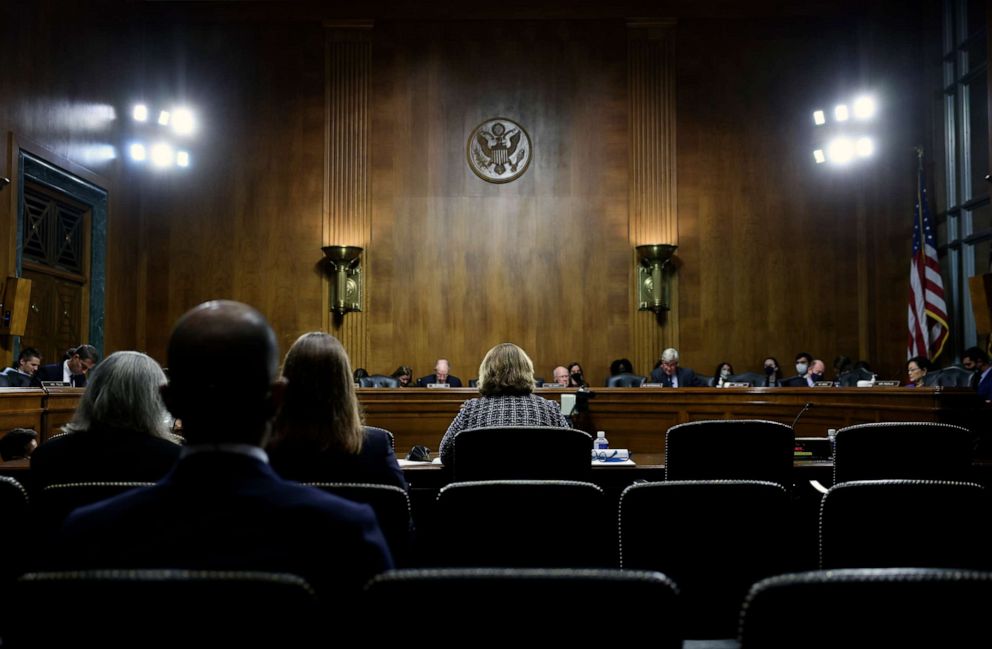
The current law doesn't define abusive dating partners or alleged stalkers as domestic abusers, and instead focuses on spouses and live-in partners, which Watts called a loophole.
Every 16 hours a woman in America is shot dead by a current or former partner, according to the Brady Campaign to Prevent Gun Violence. Further, an Everytown analysis found that in at least 53% of American mass shootings from 2009 to 2020, the gunman also shot a current or former intimate partner or family member.
The VAWA, initially passed in 1994 and expanded in later years, has since expired.
"It's really toxic masculinity that's at the root of domestic violence and mass shootings -- misogyny and easy access to guns," Watts said. "Guns are the weapons of choice for extremists, for misogynists, for insurrectionists and, ultimately, women are paying the price with their lives."
Editor's note: This article previously identified Michael Kimmel as a professor at Stony Brook University. He is retired and no longer affiliated with the university.




